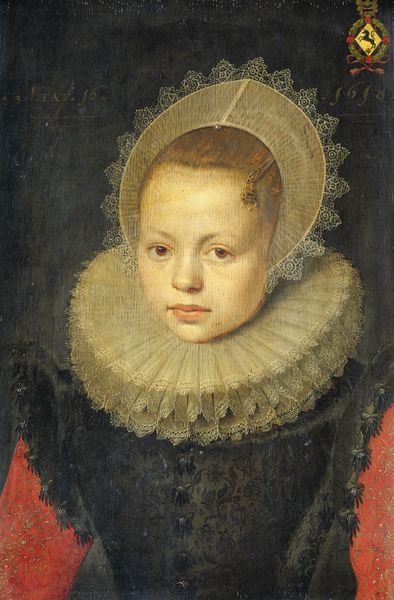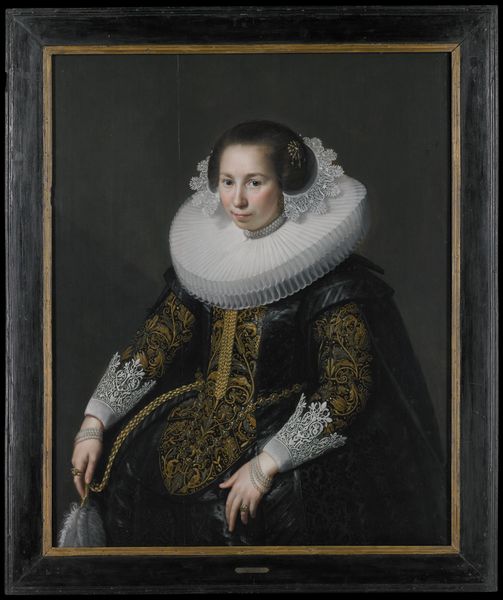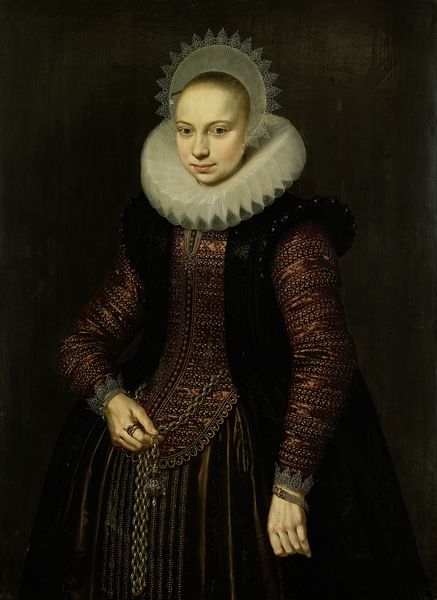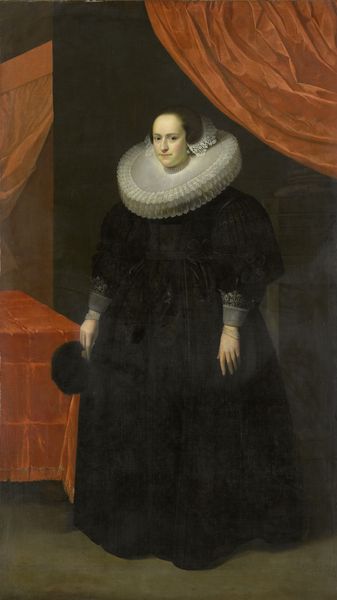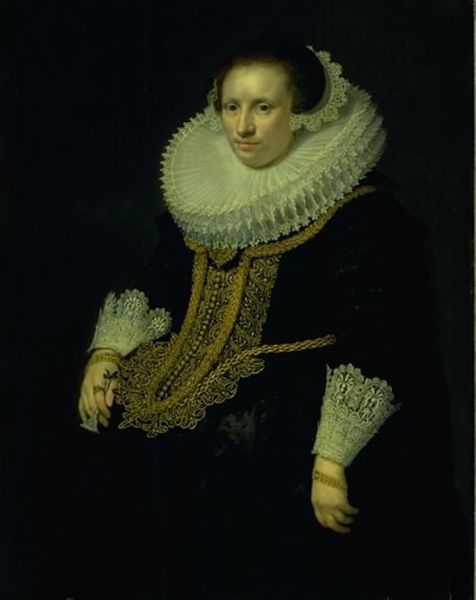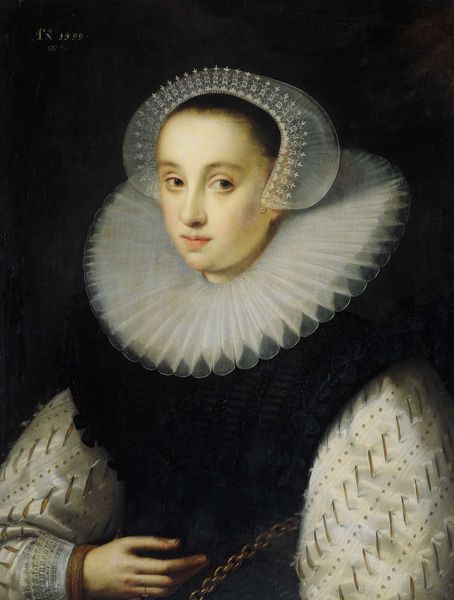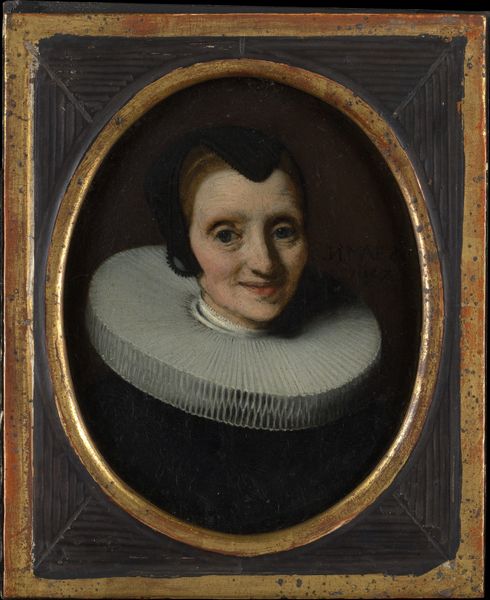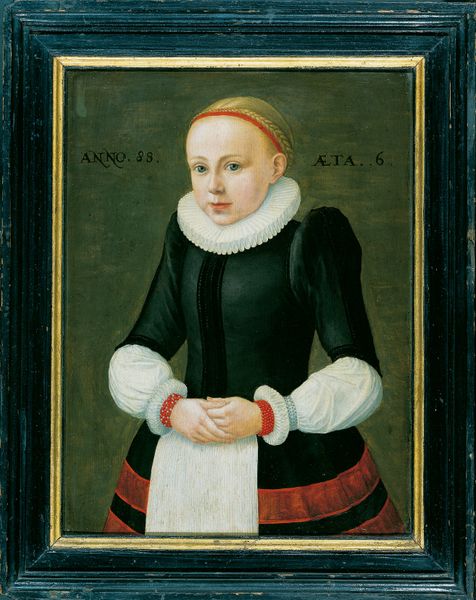
painting, oil-paint
#
portrait
#
dutch-golden-age
#
painting
#
oil-paint
#
oil painting
#
underpainting
#
painting painterly
#
mixed media
#
watercolor
#
realism
Dimensions: height 82 cm, width 64 cm, depth 6 cm
Copyright: Rijks Museum: Open Domain
Curator: Here we have a captivating portrait entitled "Catharina Fourmenois (1598-1665)," rendered in oil paint in 1604 by Gortzius Geldorp. Editor: It's remarkable. I’m immediately struck by how the details almost feel subdued, particularly considering the extravagance implied by the attire. The stark collar draws my eye right away. Curator: Indeed. The subject’s clothing speaks volumes about her status. Portraits of this kind, especially during the Dutch Golden Age, served to solidify social standing. Notice the exquisite detailing, likely reflecting the craftsmanship of the finest workshops in the area. It underscored family wealth and positioned them favorably within the burgeoning mercantile society. Editor: And consider the process of rendering those details. Look at how the ruff is built with countless individual strokes. I'm sure skilled artisans spent hours meticulously stitching such finery in reality, and here Geldorp mirrors that labor with painstaking brushwork. The materiality, both real and represented, highlights the economics of the era. Curator: Absolutely. This portrait, like many of its time, was commissioned. The Fourmenois family undoubtedly wanted to project an image of prosperity and respectability. Her gaze is level, poised. Editor: Yes, poised but also somewhat reserved, wouldn’t you say? There is something fragile there that undercuts the formal display. It's subtly human despite the layers of wealth depicted in the materials. Curator: That’s perceptive. While the artwork functions as a socio-historical document showcasing wealth and societal expectations, Geldorp was a successful artist who captured his sitters with some element of individual expression, complicating the picture somewhat. Editor: Which reminds us that portraits are never neutral records, are they? It’s a negotiation. I keep coming back to how the handling of paint becomes its own kind of labor – almost mirroring and honoring the invisible labor behind that incredible ruff and gown. Curator: It’s an enriching consideration. Seeing the labor within art and without allows us a complete view. Editor: Exactly. By considering the materials, the work involved, and the subject herself, we gain a richer, and arguably more accurate, understanding.
Comments
No comments
Be the first to comment and join the conversation on the ultimate creative platform.


